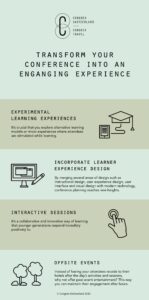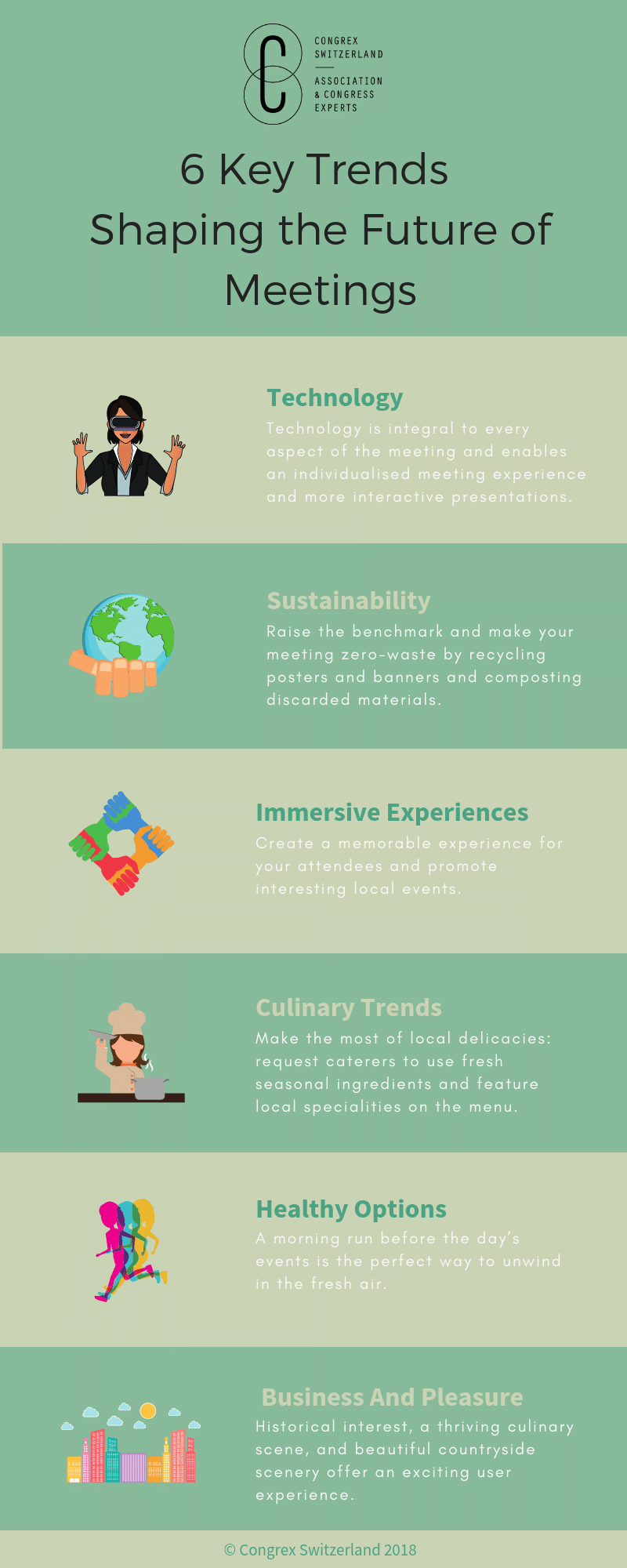5 Event Technologies to Achieve a Captivating Attendee Experience
Despite the many changes in the meeting industry, the attendee experience remains central to successful event management. Impactful meetings require more than just getting people together; they should be planned to become immersive journeys that educate and inspire.
As a core element of a positive experience, attendee engagement is now a core metric that has prompted event organisers to rethink goals and strategies. In this blog post, we examine cutting-edge technology’s role in designing and delivering captivating and engaging attendee experiences.
1. Virtual Reality and Augmented Reality

Research data confirms the growing importance of VR and AR in the events industry: by 2028, the market is expected to grow at annual rates exceeding 20%.
Behind the large-scale adoption of these technologies are factors like the rise in virtual and hybrid events. VR and AR are a natural match for this type of events due to their ability to take virtual participation to a new level.
The main appeal of this technology is its ability to achieve total digital immersion that removes barriers to access and participation and creates new layers of engagement during the entire attendee journey.
Critical applications with the potential to go mainstream include immersive workshops, healthcare conferences, and medical trade shows, where novel procedures and devices can be explored in full detail without needing to be present.
RELATED: The Growing Impact of Virtual Reality in the Meetings Industry
2. Event Apps

Event apps can redefine the attendee experience by infusing it with convenience, tailored content, and personalisation. Thanks to their extraordinary impact on planning efforts, nearly 80% of organisers claim they obtained improved ROI when using event apps. Some tried-and-tested uses of user-friendly apps include:
- Seamless registration.
- Assistance with wayfinding.
- Creation of personalised agendas and curated schedules based on individual attendee interests.
- Interactive in-session features like Q&A with speakers, knowledge sharing through discussion forums, or built-in networking.
- Real-time feedback and post-event surveys.
3. Artificial Intelligence and Chatbots

Even the best planning efforts can become a negative attendee experience if delegates are left without assistance when needed. AI and chatbot technologies combine automation with personalisation to deliver immediate on-site timely aid and communication.
For example, chatbots can provide 24/7 support for a satisfactory experience inside and outside the venue, offering session recommendations, links to downloadable presentations or other speaker publications, and suggestions about transportation, hospitality, and eating-out recommendations based on individual dietary considerations.
AI has multiple applications, from advanced data analytics to live translation in international conferences for better cultural inclusivity or holographic displays at medical conferences.
These technologies can also leverage interactions for data collection and analysis purposes, which helps make strategy adjustments for future events.
RELATED: How To Use AI In Conference Management
4. Live Streaming and Hybrid Event Solutions

These technologies are crucial for bringing global accessibility to professional meetings, as they facilitate engaging real-time experiences even if travel restrictions or other limitations are in place. Key applications include interactive sessions and networking opportunities that would not have been available otherwise to geographically dispersed delegates.
Moreover, live streaming and hybrid event tech can do more than broadcast content to the audience.
Some of these platforms can be integrated with event tech, like apps or wearables (discussed below), to create an engaging and supportive digital environment that helps attendees get the most out of their experience.
For organisers, the reduced logistics burden achieved through these technologies means they can truly focus on boosting engagement at every touchpoint.
RELATED: 4 Quick Steps to Maximise Your Professional Conference
5. Wearable Technology

The most common event wearables are smart badges and wristbands, which streamline registration, keep data secure and compliant and facilitate contactless interactions for enhanced health and safety requirements. This reassures attendees that their time and well-being are valued and respected.
Wearable tech also has applications in networking, allowing delegates to exchange information with a single click or swipe, so the interaction is simplified, and they can focus on building genuine connections.
What’s more, the rich data generated by these technologies can be used to maximise engagement by giving organisers actionable insights on how to improve the experience year after year.
RELATED: 8 Tips to Make Your Next Conference Memorable
Conclusion
Successful events are carefully planned journeys that educate and inspire. The technologies available in the 21st century can help professional conference organisers design and deliver captivating and immersive attendee experiences that bring value to all stakeholders. The strategic implementation of these technologies ensures that every event is an opportunity for knowledge sharing, discovery, and connection. Get in touch with the Congrex team to find out how our event technology services can benefit your next event.
At Congrex, we have the experience and skills to help you plan a successful international conference that satisfies all stakeholders. Contact us for more details.








